Microsoft partners with French start-up Mistral to expand its generative AI

Microsoft has announced a partnership with Mistral, a French artificial intelligence start-up that builds large language models, the underlying technology that powers generative AI products. Generative AI is a branch of artificial intelligence that can produce text, images and code in seconds, and has the potential to transform various industries and sectors.
The deal will help 10-month-old Mistral, which was valued at €2bn in December, bring its AI models to market. Microsoft will also take a minor stake in Mistral, although the financial details have not been disclosed. The partnership makes Mistral the second company to provide commercial language models available on Microsoft’s Azure cloud computing platform, after OpenAI, the San Francisco-based AI research lab.
This is a significant milestone for us, as the unparalleled performance of this multilingual model will continue to push the boundaries of what is possible with frontier AI”
Arthur Mensch, Co-founder and CEO – Mistral AI (in centre photo above with his team)
Microsoft has invested about $13bn in OpenAI, an alliance that is being scrutinised by competition regulators in the US, EU and UK. OpenAI’s latest model, GPT-4, is a so-called black box, meaning the data and code used to build the model are not available to third parties. Mistral, on the other hand, builds open source models, meaning technical details will be released publicly.
The partnership with Mistral is part of Microsoft’s strategy to diversify its involvement in the fast-growing generative AI industry, and to compete with other Big Tech rivals, such as Google and Amazon, that are also investing heavily in this field. Microsoft hopes to leverage Mistral’s expertise and innovation to offer more choice and flexibility to its customers and developers who want to use generative AI for various applications and purposes.
Building language models
As Mistral’s models are open source, technical details are released publicly and this model is a sharp contrast to some competitors, such as OpenAI, whose models are not available to third parties.
Mistral’s first model, known as Mistral 7B, is available for free use without restrictions. It was released under the Apache 2.0 licence, a highly permissive scheme that has no restrictions on use or reproduction beyond attribution. This means the model could be used by anyone, from a hobbyist to a multi-billion-dollar corporation, as long as they have a system capable of running it locally or are willing to pay for the requisite cloud resources.
Mistral 7B is a further refinement of other “small” large language models like Llama, offering similar capabilities at a considerably smaller compute cost. The company’s ambition is to become the leading supporter of the open generative AI community, and bring open models to state-of-the-art performance.
The development of Mistral’s models involves intense work, including assembling the Mistral AI team, rebuilding a top-performance MLops stack, and designing a sophisticated data processing pipeline, from scratch. The founders had a head start in that they had worked on similar models at Meta and Google DeepMind.
While the free model is free to use, if you want to dig in, you’ll want their paid product. Their commercial offering will be distributed as white-box solutions, making both weights and code sources available.
Stop Press – AIBC Eurasia takes place in Dubai 25 – 27 February !






